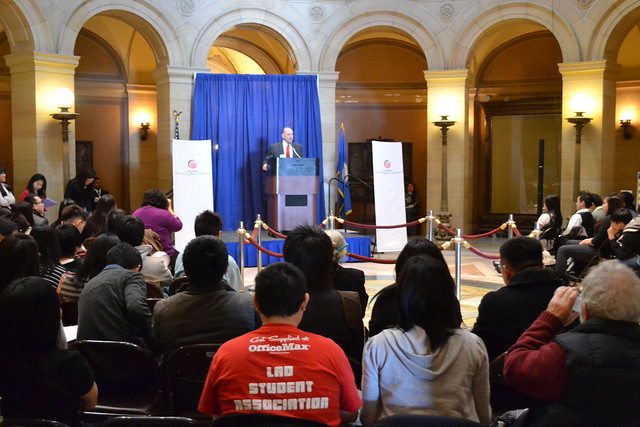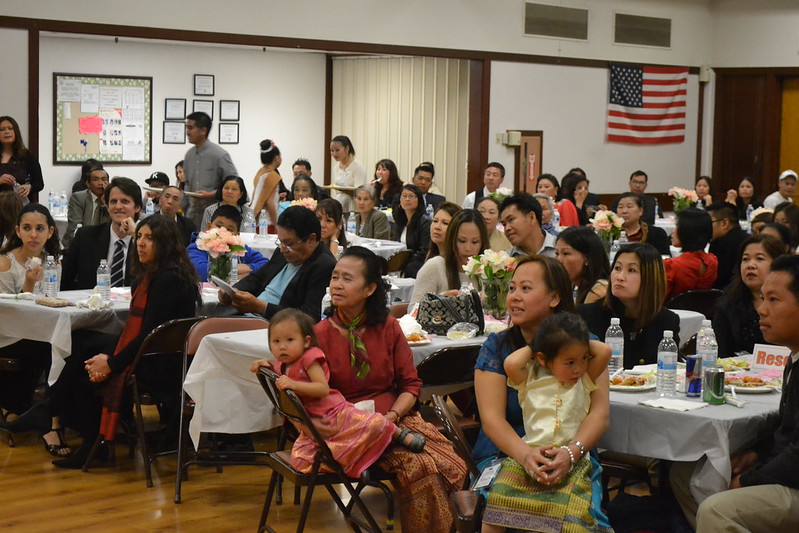
I've written frequently on the issue of Lao youth development. There's a crucial need to develop successful methods for generating long-term success in our community. It's a legacy we need to concentrate on building for our youth.
For years, I've worked with my clients across the country to develop programs that are easy to implement and make sense. Both from a mainstream perspective and that of the local Lao community. To get started, communities need a frank assessment of their capacity to make those programs work. I've found there isn't necessarily a one-size-fits-all model that we can port over from state to state in the US. But I think there are many states where we can make a good funding case for organizations committed to the education of Lao youth. Hopefully, we'll see more organizations taking active steps to make this happen.
One of the important things I always strive to communicate to funders first is the fundamental background of our community. The majority of Lao arrived in the US as refugees from the Laotian Civil War (1954-1975) that killed or displaced over half a million people. This had a profound effect on our academic and professional success over the last four decades.
While Lao made many gains in rebuilding their lives in the US, research conducted by the Asian American Justice Center in 2006 shows that educationally the Lao community lags behind many other Asian American groups including Vietnamese, Thai, Chinese, Korean, Asian Indian, Filipino and the Japanese. As the Census 2010 points out, barely 10% of Lao adults have a 4-year college degree or better. Further, 42% of Lao adults have less than a high school education. Yet there are few resources presently committed to turn these statistics around.
When you present it properly, funders can appreciate the need to support a program. But if your organization has been around for a while, they're going to rightfully ask why you, and what are you doing to make things different this time.
Our communities can no longer afford organizations merely paying lip-service to encouraging academic success. They need real, concrete programming that goes beyond 'stay in school' and 'study hard' messages. We have to take the matter seriously and see our long-term success connected to our students' success. The programs must succeed at demystifying the American academic system and how it connects to so many other aspects of our community life.

Organizations should make it a priority to inspire Lao to pursue post-secondary education. This will require a
blend of services including academic support, test preparation, significant
placement assistance and social/emotional support from adults who understand
the challenges Lao youth encounter.
An effective Lao organization needs to expand their existing leadership-focused activities, including programming that allows the community avenues for cultural expression and engagement. A program needs to ensure a constructive Lao voice emerges with multiple opportunities to realize their full potential. Plurality is an important element to our community development.This extends even into our youth programming.
An effective Lao organization needs to expand their existing leadership-focused activities, including programming that allows the community avenues for cultural expression and engagement. A program needs to ensure a constructive Lao voice emerges with multiple opportunities to realize their full potential. Plurality is an important element to our community development.This extends even into our youth programming.
An organization should be conducting numerous listening sessions
and forums to gain consensus on critical issues facing local Lao community members. In most cases, we've found community members will give the organization significant latitude to work with their youth, but we must still focus on culturally-appropriate methods.

A primary goal of a Lao youth program should be to aid historically underrepresented Lao perspectives to become more deeply engaged in self-advocacy. The program should seek to develop key skill sets that will allow our youth to access resources and support systems meaningfully for long-term success. It's not enough to know where to find information or tools, the point is for our youth to feel comfortable using them.

A primary goal of a Lao youth program should be to aid historically underrepresented Lao perspectives to become more deeply engaged in self-advocacy. The program should seek to develop key skill sets that will allow our youth to access resources and support systems meaningfully for long-term success. It's not enough to know where to find information or tools, the point is for our youth to feel comfortable using them.
Organizations developing a professional program should consider a 4-fold approach: (1) integrating the organizations leadership programming with a new post-secondary pathway initiative to provide
comprehensive services to high school youth; (2) mobilizing the Lao community to
achieve higher levels of educational attainment; (3) improving access to
academic support services; (4) and expanding the availability of post-secondary
access services (i.e. ACT preparation, college applications, financial aid
packaging, etc).
Most organizations have enough capacity to work with 30 to 60 students. I'd recommend trying to work with no more than 90 at a time in most communities. Beyond that, the quality of services tends to degrade and many staff simply do not have the capacity to manage this well.
Most organizations have enough capacity to work with 30 to 60 students. I'd recommend trying to work with no more than 90 at a time in most communities. Beyond that, the quality of services tends to degrade and many staff simply do not have the capacity to manage this well.
The Lao organizations that are driven to succeed should consider developing a high school cohort model, dividing them effectively into three cohorts. An organization's staff should aim to meet with the three youth cohorts at
their school once each week in after-school sessions focused on post-secondary
access.
The Lao youth in such cohorts would initially spend time exploring various careers, complete interest inventories, establish goals and strategies, and report on their progress. The end result seeks to develop strong peer-support systems in each cohort, a body of peers who will inspire each other to achieve their post-secondary goals and strategies.
The Lao youth in such cohorts would initially spend time exploring various careers, complete interest inventories, establish goals and strategies, and report on their progress. The end result seeks to develop strong peer-support systems in each cohort, a body of peers who will inspire each other to achieve their post-secondary goals and strategies.

Parents are a part of the process too, and staff should work to facilitate parent forums during the year to familiarize Lao parents with the program, the benefits of a college education, college options and financing, and what parents can do to support their children’s pursuit of a college education.
A good program will focus on connecting students to academic support. College tours, college application assistance and transition mentors are also good to seek funding for, as well as prep classes for standardized tests. Organizations should anticipate such a program will require a budget between $45,000 to $100,000 each year. But if it can effectively work with 30 to 90 youth each year, it will be a powerful return on investment.
No comments:
Post a Comment